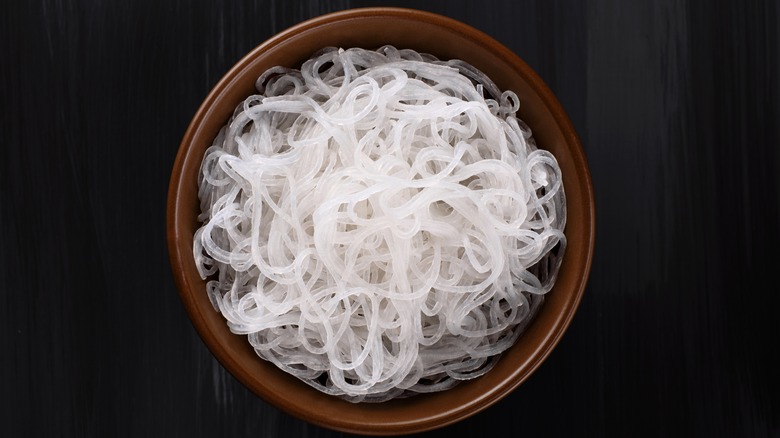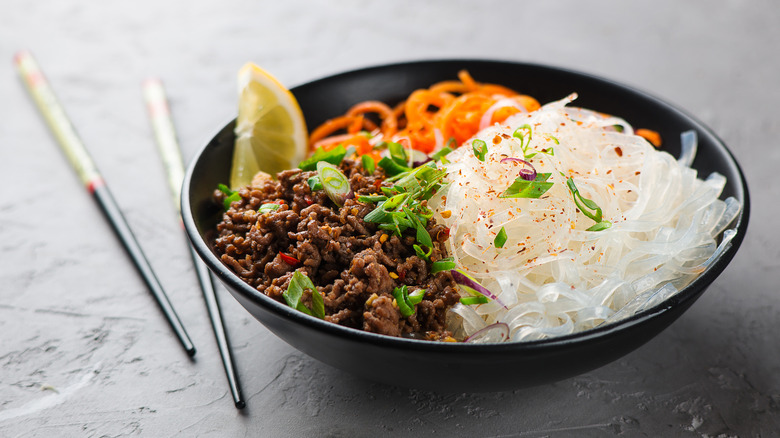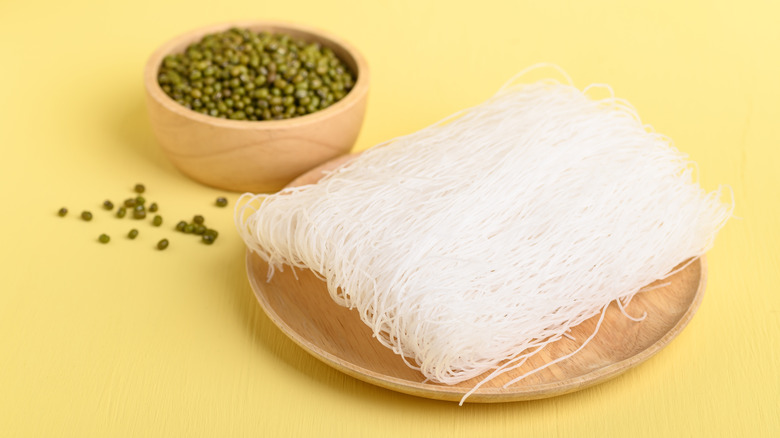What Everyone Should Know About Cooking Glass Noodles
When it comes to cooking up glass noodles, there are two main methods of cooking them. The first involves allowing them to soak in warm water. The other adds them into hot oil to fry. But no matter which method you opt to use, there's a particular method to serving them. Glass noodles will need to be eaten and enjoyed pretty quickly if you want them to maintain the right texture.
The noodles are pretty absorbent — so if you're serving them in a soup, you can expect them to take on a little bit of flavor from the broth. Since they take on liquid pretty quickly, they could expand more than you intended after they're added to your other liquid ingredients.
Additionally, these noodles are fine as leftovers — simply reheat them until nicely hot for a consistency that's close to fresh. However, cooking up a new batch of noodles if you want the same dish for multiple meals will give you the best texture.
There are two main ways of cooking the noodles
If you're ready to cook up some glass noodles, the preparation method you use will be dependent on how you plan to serve them. For dishes like soups or stir fries, you'll likely want to cook them in warm water. Simply add the noodles to a bowl of warm water, then allow them to rest until they're soft enough to eat — anywhere ranging from five to 20 minutes, depending on the brand. For a little added flavor, you could even rehydrate the noodles in some warm broth, or add some seasonings into the water.
If you're craving a more crunchy salad topping, try frying the noodles instead. Heat up your preferred oil in a pan, then carefully dip a test noodle in. If the oil is the correct temperature, the noodle will expand rapidly and take on a puffy texture. Then, you can add the noodles to the oil in small handfuls, using a wooden spatula to carefully keep them submerged until fully crispy.
The noodles can be made from a few different starches
There are a few different kinds of glass noodles, so the exact timing needed to cook them up could differ, depending on which variety you're using. The noodles are made from a starch and water blend. The starch can be derived from mung bean, sweet potato, tapioca, or potato. No matter what they're made from, the noodles will have a very mild flavor, making them an excellent complement to other, more flavorful ingredients.
Once your glass noodles are cooked and ready to eat, they can be added to a wide range of dishes. You can toss the boiled noodles in a bowl with some green papaya, peanuts, and chili vinaigrette for a deliciously zesty noodle dish. But if you're craving a crunchier noodle topping, try them in a Thai grilled chicken noodle salad. No matter how you choose to prepare your glass noodles, just make sure to serve them soon after to prevent any additional unwanted textures.


